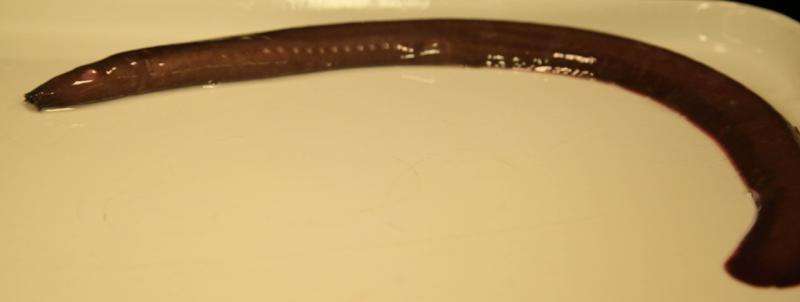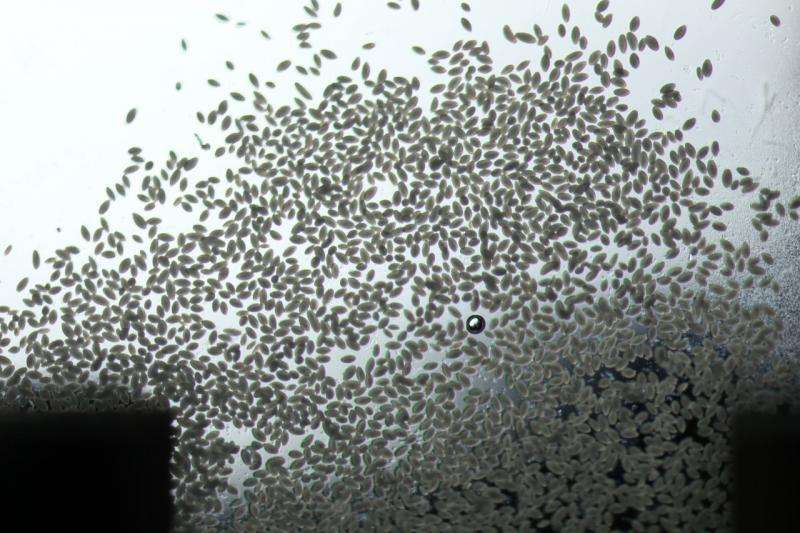Researchers explain the unique properties of hagfish slime

Hagfish are marine fish shaped like eels, famous for releasing large quantities of "slime" that unfolds, assembles and expands into the surrounding water in response to a threat or a predator's attack. This defense mechanism even works against sharks by effectively clogging their gills or choking them.
The hagfish's successful use of its defense gel is remarkable, particularly because the animal exerts no direct control over the concentration of the slime it exudes into the seawater.
Gaurav Chaudhary, a doctoral candidate in the department of mechanical science and engineering at the University of Illinois at Urbana-Champaign (UIUC), will present his work on hagfish slime during the 88th Annual Meeting of The Society of Rheology, being held Feb. 12-16, in Tampa, Florida. The research explores the hagfish's slime formation and the special properties allowing it to assemble into a solid gel without dissolving into the surrounding water.
To do this, Chaudhary and his colleagues visited the University of Guelph in Canada, where Professor Doug Fudge maintains a large stock of hagfish.
"We obtained raw slime material directly from live fish and then were able to produce our own slime samples of varying concentrations," said Chaudhary. The researchers used a rheometer, which measures the response of such unusual viscosity fluids to forces, to measure how the slime stretched and flowed over time and under various conditions.

The research team, led by Randy Ewoldt, an assistant professor who runs the Ewoldt Research Group at UIUC, discovered that the slime's solid- and liquid-like properties remain "self-similar" for a wide range of concentrations. This means that even though the concentration may change dramatically, the general structure and properties of the gel will not.
"The gel becomes stiffer with concentration," Ewoldt said. Their results also show that the consistency in how the slime deforms and flows exists because the slime has a similar structure at all concentrations.
"We now know that this material, 10,000 times softer than Gelatin, isn't just an ultra-soft elastic solid as earlier believed," Chaudhary said. "Rather, it has very interesting time-dependent properties. Its concentration-dependent properties are very different compared with many other biopolymer or synthetic systems. Such properties make slime distinctly ideal for assembling under uncontrolled conditions."
Slime has a myriad of potential applications. For example, it could plug or slow leaks from oil drilling equipment, or provide cell cultures with a sparse network of fibrous elements that may offer unique tissue scaffolds architectures and even support 3-D cell cultures.
"Our future efforts will focus on gaining a better understanding of the mechanics of the slime's microstructural level," Chaudhary said. "We'd eventually like to develop materials to achieve similar functionality as hagfish slime by using synthetic components, and further develop ideas and methods to better engineer the material."
More information: Network formation in an infinite sea of water: Concentration-dependent rheology of hagfish defense gel. www.rheology.org/SoR172/ViewPaper?ID=189
Provided by American Institute of Physics





















